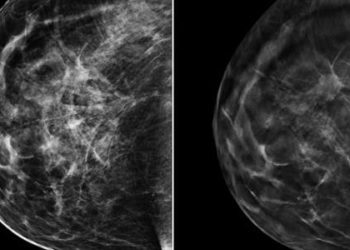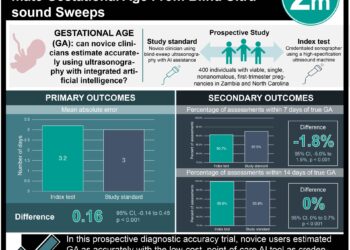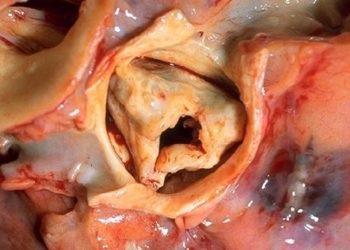Image-guided percutaneous drainage of pericardial effusions is safe and effective
1. Percutaneous drainage under ultrasonographic (US) or fluoroscopic guidance is a safe and effective treatment for patients with symptomatic pericardial effusion.
2. Drainage of posteriorly distributed pericardial effusions via a transhepatic approach is preferable to drainage using a subxiphoid or apical approach due to improved effusion accessibility.
Evidence Rating Level: 2 (Good)
Study Rundown: Patients presenting with acute, symptomatic pericardial effusions require immediate treatment through percutaneous needle drainage or pericardial windowing to resolve potentially lethal hemodynamic complications, including cardiac tamponade. Percutaneous pericardiocentesis performed without image guidance is associated with many complications, including recurrence and mortality. As such, various imaging modalities, including ultrasound and fluoroscopy, have been explored as a supportive technology to limit the adverse outcomes of percutaneous pericardial drainage. The aim of the present study was to evaluate the technical and clinical success of percutaneous drainage in the treatment of symptomatic pericardial effusion when performed with imaging guidance by interventional radiologists. Under ultrasonographic and fluoroscopic guidance, the drainage of pericardial effusions was found to be safe and effective with a high technical success rate. Using radiographic information to characterize the location of the effusion, the researchers selected more gainful routes of access (apical, transhepatic, and subxiphoid) to drain effusion fluid from the pericardial sac. In effusions distributed posteriorly to the heart, which comprised 31% of the cases under review, the transhepatic drainage approach was particularly beneficial in the relief of symptoms, and would be technically infeasible without radiographic guidance. Study limitations include a small sample size with all subjects gathered at a single medical center in addition to the retrospective methodology utilized, limiting a direct comparison of outcomes between procedures performed with and without image guidance. Larger prospective trials in more diverse populations are necessary to devise the best treatment strategy for pericardial effusion with the goal of symptomatic relief, safely and without recurrence.
Click to read the study in the Journal of Vascular and Interventional Radiology
In-Depth [retrospective cohort]: A total of 93 consecutive patients with symptomatic pericardial effusions diagnosed by echocardiography or chest computed tomography between 2002 and 2013 were included in this study. Using clinical and radiographic information, effusions were classified according to distribution of pericardial fluid respective to the heart; with “circumferential even” defined as uniform effusion distribution within the pericardial cavity, “circumferential uneven” localized to a specific site of the pericardial sac, and “loculated” defined as collection of effusions with no connection to each other. Percutaneous, ultrasonographically guided piercing of the pericardial sac using a 22-gauge needle was followed with fluoroscopically-guided catheter insertion, allowing for pericardial effusion drainage via 3 routes: apical (13 procedures), subxiphoid (54), and transhepatic (30). 80% of transhepatic drainage procedures were performed for posteriorly-distributed effusions. The procedure was completed by two interventional radiologists at one medical facility. One mortality occurred due to uncontrolled hypotension without evidence of hemopericardium, and was not believed to be related to the procedure. In all, the technical success rate of the procedure was 99%, as defined by criteria for both anatomic and hemodynamic success in the immediate postprocedure period.
Image: PD
©2015 2 Minute Medicine, Inc. All rights reserved. No works may be reproduced without expressed written consent from 2 Minute Medicine, Inc. Inquire about licensing here. No article should be construed as medical advice and is not intended as such by the authors or by 2 Minute Medicine, Inc.






![Vaccines for predicted influenza strains may provide wide protection [PreClinical]](https://www.2minutemedicine.com/wp-content/uploads/2014/11/18156_lores-75x75.jpg)
